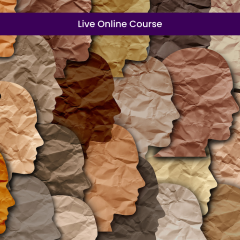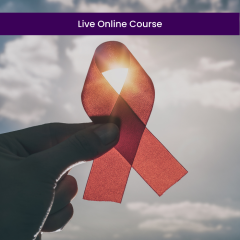Preventing Violence: Research, Evaluation, Gaps, and Opportunities (5 CE)
Course Level: Advanced
Course By: Alden Hori, PhD
Dr. Hori earned a PhD in psychology from the University of California at Riverside. He was an Associate-In Professor and Research Assistant at the University of California at Riverside, where he supervised the completion of over 50 research projects in psychology. He is credited with three publications in peer-reviewed journals.
Course Delivery: Online, Self-Paced
Content By: Moore, K., PhD, Stratford, B, PhD, Caal, S., PhD, Hanson, C., MS, MPP, Hickman, S., MPH, Temkin, D., PhD, Schmitz, H., Thompson, J., MA, Horton, S., and Shaw, A. (Child Trends)
About One of the Authors:
Kristin Anderson Moore, Ph.D., is an internationally recognized social psychologist with more than 40 years of experience studying and improving child and family well-being. Dr. Moore has published several books, including, What Do Children Need to Flourish? Conceptualizing and Measuring Indicators of Positive Development (2005) and Well-being: Positive Development across the Life Course (2003), and contributed prolifically to academic journals for decades. She has received awards from Healthy Teen Network (Researcher of the Year, 2010), the National Council on Family Relations (Fellow) and the American Sociological Association (William Foote Whyte Award, 2009), among other citations, and she has testified before multiple House Subcommittees on issues pertaining to youth and families.
Course Description:
While this course takes the lens of the child in this review, violence is often intergenerational; hence adults are frequently critical actors. The purview of this course includes varied forms of violence, including child maltreatment, crime/delinquency, gang violence, intimate partner violence, suicide, self-harm, and general physical aggression.
This course identifies a number of critical themes.
-
Violence appears in many forms, but there are common determinants across types of violence; these are the risk and protective factors that are found across types of violence. A child or family that experiences multiple risk factors and few protective factors faces a particularly high risk of experiencing violence, either as a victim, as a perpetrator, or both.
-
While the U.S. has high rates of violence compared with other countries, many programs and approaches have been identified that could reduce violence, if scaled up with quality.
-
Prevention of violence is preferable to treatment, but emerging evidence from neuroscientists indicates significant plasticity of the human brain, including individuals experiencing trauma, supporting the perspective that treatment can make a difference.
-
Social and economic disparities are strongly correlated with violence and are malleable; however, we have not focused on these because other interventions seem more realistic.
-
Interventions are available at the level of individuals, the family, schools, and communities.
-
For individuals, problems with self-regulation, sleep, hostile attributions about other people’s intentions, and abuse of substances are risk factors. While mental health problems are not generally a cause of violence, the combination of substance use and mental health issues does elevate the risk of violence. Individuals with mental health issues and disabilities are more likely to be victims of violence.
-
Family factors represent an important determinant of violence. Potential interventions include the prevention of unintended pregnancy, programs to prevent and treat intimate partner violence, and parenting education.
-
Schools are another important locus for intervention, and efforts to improve school climate include a focus on improving engagement, safety, and environment by developing social and emotional skills, reduction of bullying and other physical and emotional safety issues, and creating consistent and fair disciplinary policies.
-
-
High levels of violence across the U.S. compared with other countries suggest that there are beliefs, values, and policies underlying our national culture that, if better understood and thoughtfully discussed, could reduce violence.
-
Many of the interventions that might be pursued to reduce violence are useful in their own right (e.g., reducing substance abuse); the fact that these interventions can also reduce violence should give them added importance and urgency.
Course Outline:
1. Current data on trends of violence in the U.S. and the socio-ecological model
2. Individual factors that affect violence
3. Factors related to violence within the family
4. Violence at school
5. Violence within the community
6. Interventions to address violence and further discussion
Learning Objectives:
- Summarize the research on the determinants of varied types of violence, including child maltreatment, delinquency and crime, intimate partner violence, bullying, suicide, self-harm, and general physical violence
- Delineate the individual-level factors related to violence
- Delineate the family-level factors related to violence
- Delineate the school-level factors related to violence
- Delineate the community and societal-level factors related to violence
- Evaluate intervention approaches within an education, health, justice, and community setting and interventions that span across settings
Course Format:
Course materials can be downloaded or read online. To receive a certificate of completion, you must complete an online multiple-choice post-test with a score of 75% or better and complete an online course evaluation.
Approvals:
| Board Approvals | American Psychological Association (APA), NBCC, Florida Board - Social Work, MFT, Counseling, and Psychology, NYSED - Social Work, MFT and Counseling Only, American Academy of Health Care Providers in the Addictive Disorders |
|---|---|
| CE Format | Online, Text-Based |







